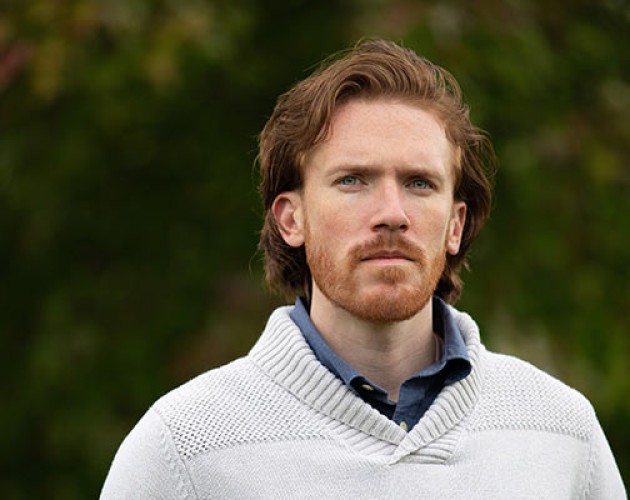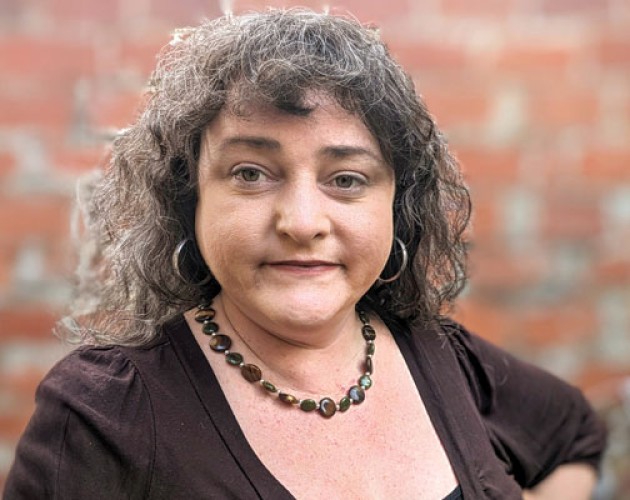Berkeley author Jane Anne Staw writes about the pleasures and importance of thinking small

Editor's note: This article features UC Berkeley Extension Honored Instructor Jane Anne Staw. It was written by Frances Dinkelspiel (Jan. 30, 2018) and republished with permission from Berkeleyside.
Jane Anne Staw may be the Bay Area’s horse whisperer for writers. A successful writer herself, Staw has served as a teacher and writing coach for hundreds of people through her private classes, at UC Berkeley Extension (where she is an Honored Professor [sic]), in the MFA program at the University of San Francisco, at the Iowa Writer’s Workshop, at Stanford, and other programs.
“She’s a therapist for words and wordsmiths, challenging her authors to dig deep and find the true, best meaning in their work and ideas,” said Karen Galatz, who has been working with Staw for two years and whose writing is showcased on her website, Muddling Through Middle Age.
Now Staw’s students and clients will have a chance to delve into her new collection of essays in Small: The Little We Need for Happiness. The book is a meditation on the merits of reducing one’s gaze, and the benefits that come from thinking about the specifics of one thing at a time rather than letting your mind run wild.
“In my book, I invite you, the reader, along on my journey, as I learn to shift my perspective away from disappointments that loom large in my psyche, a multitude of commitments, an endless “to-do” list, and scenes of blight and decay that drag me down, to learning to set my sites on one commitment I look forward to, a moment of beauty within the blight and decay, a pinprick of light within disappointment,” Staw writes on her website.
Staw will be reading at a book launch party at Mrs. Dalloway’s Books, at 7:30 p.m. on Thursday, Feb. 1.
Full disclosure: This reporter studied with Staw many years ago. And loved what she learned. So of course, I couldn’t wait to find out more about Small: The Little We Need for Happiness. Here is our email exchange:
We live in an era of big. Big personalities, like Donald Trump. Big ideas, coming from the likes of Elon Musk. Big data, which has shown us societal trends. In your mind, what is the power of seeing, thinking, and acting small?
There’s nothing wrong with big. But paradoxically, the best way to arrive at big is to think small. Many people who have accomplished great things will tell you that the best path to great is, in fact, small. I just had a collection of bookmarks printed with quotes about small from famous thinkers and artists. William Faulkner for example, said: “The man who removes a mountain begins by carrying away small stones.” In a more contemporary context, my son, Jonah, works for Logitech, a tech giant, where the CEO, Bracken Darrell, loves to talk about thinking small. On a more personal level, I’ve discovered that by thinking small, I see so much unexpected beauty and goodness in the world, which makes much happier than I ever was before.
What inspired you to write this book?
I often tell my clients that inspiration is a very small part of writing. It’s showing up on a regular basis that makes writing happen and puts you just where you need to be when inspiration strikes. In the case of my book, however, inspiration is 100% responsible for its existence. I write about this in my introduction. One day I was taking my dog, Daphne, who is no longer with us, for her usual afternoon walk around the block. I had taken this walk with her for years–at the same time, around the very same block, which meant that I usually fell into the routine of putting one foot in front of the other, and began thinking about anything and everything but what was right in front of me. Then one afternoon, I happened to look down and saw the most exquisite dried leaf on the sidewalk. I stopped to gaze at the leaf, then walked on, thinking about how lovely it was. The more I thought about the leaf, the happier I felt. And then, just before I reached home, a voice in my head told me, “You should spend the next year writing about small.” Luckily I listened to that voice.
Did the idea of seeing and thinking small evolve as you wrote?
It’s funny. The inspiration arrived via a lovely dried leaf, but initially, my experiences and my writing about small were mainly conceptual. I was a perfectionist who strove to do everything perfectly—as crazy as that sounds—and I frequently felt overwhelmed, was easily disappointed and often lonely. Along with that, I escalated or enlarged the difficulties in my life. My initial experiences with small revolved around learning to downsize instead of escalate. It was only later that small became both an aesthetic and a spiritual practice, which led me from bouts of feeling isolated and lonely to feeling connected to both other people and the beautiful world around us.
You have been a writer and a writing instructor for decades. (In fact, you taught me a lot.) You have had your own ups and downs: the publication of an acclaimed memoir followed by a writing block. How can the idea of thinking small apply to writers?
That’s a great question, and here you’ve hit on one of my passions. When I was proofreading my book, I realized that I have known about and practiced small for many years in my writing. I was a terribly blocked writer in college, and when I thought back to overcoming my block, I realized a lot of my ability to write now comes from thinking small about writing. In fact, there’s a chapter in the book, called, “Word by Word” that tells of my being able to write poetry after years of block. At some point, years after I was able to write more fluently, I understand that poetry is all about capturing one word and then the next, the ultimate territory of small. Later, I learned to write prose with some ease by thinking, not of the whole essay or chapter, but of one paragraph and then the next and the next. In my coaching, I practice small with many of my blocked clients by limiting their writing time to 15 minutes a day at first. Even five minutes if they are really struggling. Once the 15, or the five, minutes feels comfortable, we slowly expand the writing time. And this is just one example of how seeing small can figure in a writing practice. Others include not thinking about the whole story or essay or novel, but keeping your sights on the paragraph you are writing at the moment. Or selecting one ideal reader and excluding everybody else from your writing universe. Most writing inhibitions are the result of thinking much too big.

How did you decide what experiences to write about?
Once I started thinking small and writing about it, I quickly had too many experiences to write about, so I knew I had to choose. After several months, I evolved two criteria: first, I would write about those experiences that resonated the most intensely for me, and second, those that didn’t replicate experiences I had already written about. For example, I knew right away that I wanted to write the essay titled “Our Best Asset,” because the mother’s comment about her disabled daughter immediately struck me. A later chapter, “Only a Word or Two,” about Henry James’s short story, “The Beast in the Jungle,” seemed important because in the story I found a literary echo of what I was discovering in my writing and my life, and none of my other essays dealt with literary equivalents. But I want readers to understand that once they start practicing seeing small, their lives will be filled with exciting examples.
Why did you choose the essay form to write about your experiences?
I’ve been drawn to the essay for a long time. In the beginning, it was the genre I taught most of the time—everywhere from Stanford’s freshman English program to the masters in nonfiction program at Iowa and UC Berkeley Extension. Later, I realized that writing essays and writing poems both involve undertaking a journey to an unknown destination. In a poem, you might set off on this journey because of an image, a sound, a word, or an emotion, while in an essay, you often set out because of an idea or an experience. Yet despite this difference in inception, the process, at least for me, is very similar. In each, I begin with a spark, then wander through unknown territory, clothing something vague or incomplete with words.
What are the pleasures of living small?
That’s easy to answer. In the first place, by thinking small, I am usually able to avoid my old feelings of overwhelm, anxiety, and loneliness. Instead, I now feel intimately connected to other people and to the world around us, which contains so much unexpected beauty.
In one essay, you write about healing a very serious falling out with your family of origin by meditating on the loving kindness meditation for several months. At one point did you realize that this was a wonderful example of “seeing small”?
This essay took much longer to suggest itself to me. It wasn’t until I had meditated on the “loving kindness” prayer for some months, and had begun to feel my own rage–at my mother for preferring my brother to me and constantly criticizing me—dissolving that I realized how much change and transformation something as small as a four-line prayer could effect. This experience had such a profound affect on me, that I’m now writing a new book called “A Year of Loving Kindness,” about my experiences meditating on this prayer.

